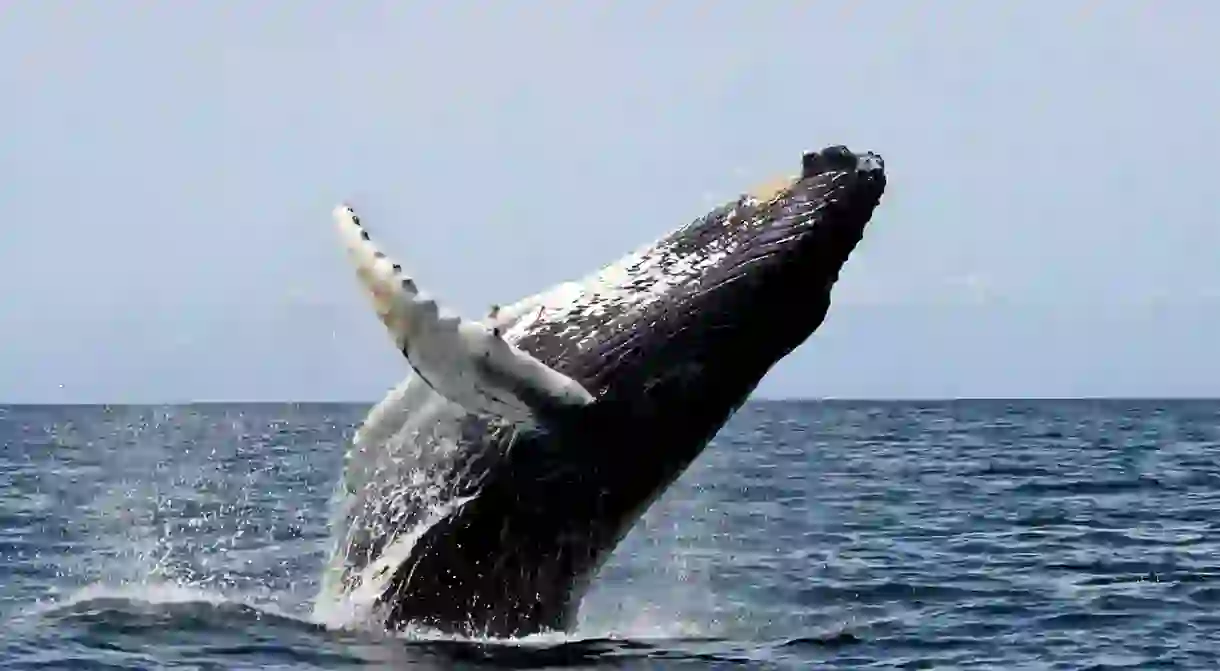Why Baja California is One of the Best Places On Earth to Spot Whales

During the months of December to early April, something incredible happens in Baja California: almost the entire world’s population of grey whales, humpbacks and 2-3,000 blue whales migrate to its shallow lagoons to socialise, mate and give birth. Rivaled only by the Galapagos, the world’s second largest peninsula is a paradise for marine mammals – and a must-visit for those in search of one of the most spectacular wildlife-spotting experiences on our planet.
It’s where most whales take their first breath
Baja California’s UNESCO protected bays (meaning whales here are protected from big boats, water pollution and hunting) combined with the naturally calm, warm and nutrient-rich waters, make it the perfect breeding spot for whales. In fact, grey whales give birth in only three locations in the world, all of which are in Baja’s peninsula. A whale watching tour in Baja, then, means getting to the very life source of the ocean’s most majestic animals – and, of course, the chance to see a lot of baby whales. What more could you want?

You can spot up to 9 different species
Although most tours focus on spotting grey, blue and humpback whales, Baja California also sees large numbers of sperm whales, fin whales, minkes, Bryde’s Whales, orcas and the short-finned pilot whale – not to mention a huge array of other marine life, including manta rays, dolphins, sea lions and turtles. Put it this way: it’s likely that you won’t know where to look first.

Small boats, small groups
Forget a huge boat with crowds of people running over to the railings fighting for a snap of a humpback’s fin in the distance. Most tours in Baja, no matter which type of whale you’re going to see, use Mexican pangas, 22 foot (6.7 metre) fibreglass boats capable of holding only 8-10 people. These boats, usually operated by local fishermen turned expert whale guides, allow you to get up really close to the whales and cover more distance in a short space of time, meaning if you spot a mother and her calf playing 200 metres (656 feet) away, you can be there in a flash.

You’ll get super close…
The small, fast panga boats are perfect for those really close encounters. In other words, if you’re spotting grey whales, it’s pretty unheard of to not have the whales pressed up against your boat. For the less playful whales, such as the blue whale and humpback, you may not be touching them, but you’re still likely to get closer than ever before.

And even get to touch them
With most wildlife watching, it’s normally in the best interests of both the animal and the observer to keep a safe distance. However, when it comes to interacting with Grey Californian Whales, this doesn’t apply. Researchers have found – including National Geographic reports – that grey whales are hugely social animals and actually seek human interaction, often pushing their young – and even lifting them up – to the boats to be petted. In fact, you’ll often be told by your captain to stroke and splash the whales with water as much as you can, because if you don’t, they leave for attention from another boat!
The guides really care
In the remaining 7 months of the year where whales are not breeding in the lagoons, most guides earn their living as fishermen. With declining fish numbers in Baja waters, these fishermen rely more and more on whale tourism to survive, meaning they take the protection of these wonderful animals very seriously. In Loreto, whales are so important to the local community that it holds a 3-day Blue Whale Festival every March with talks, presentations and live music performances to honour the giant and raise conservation awareness.

It’s affordable
Being such a unique experience – and as it only offers work to locals for 5 months out of the year – tour operators here could be charging through the nose, but they’re not. The grey whale watching tour in Laguna Ojo de Liebre in Guerrero Negro, for example, costs $50 (€40), which includes transport to the lagoon, guide, 3 hours on the water and a packed lunch. Tip: if you’re wanting to see the blue whales in Loreto, don’t book online (American-owned tours go for $100-150, or €81-121 per person). For the best deals (normally 4,000MXN ($214, or €173) for the whole boat), go to the fishing port at 7.30 am and organise a tour directly with the captains.














